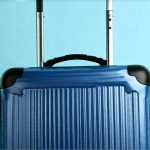Travel, for many, evokes images of exciting destinations, cultural immersion, and relaxation. However, for individuals managing bladder sensitivities, overactive bladder (OAB), nocturia, or other urinary concerns, the journey itself can be fraught with anxiety and discomfort. The simple act of prolonged sitting, limited access to restrooms, dietary changes, and altered routines can quickly transform a dream vacation into a stressful ordeal. Planning travel around urinary comfort isn’t about limiting experiences; it’s about proactively mitigating potential issues so that the joy of exploration remains central to the trip. It requires mindful preparation, realistic expectations, and a willingness to adapt – all achievable with a little forethought.
This often-overlooked aspect of travel planning is crucial for ensuring that everyone can enjoy their adventures without unnecessary worry or interruption. The key lies in understanding one’s individual bladder habits and limitations, then crafting an itinerary that accommodates these needs. It’s not about avoiding travel altogether; it’s about empowering travelers to take control of their experience and prioritize comfort alongside adventure. This article will explore strategies for designing travel days with urinary comfort as a central consideration, covering everything from pre-trip preparation to on-the-go management techniques.
Pre-Trip Planning & Preparation
Effective travel planning begins long before departure day. It’s about anticipating potential challenges and proactively addressing them. The more prepared you are, the less likely unexpected issues will derail your trip. This starts with a thorough assessment of your individual needs and limitations related to urinary function. Consider factors like frequency, urgency, capacity, and any triggers that exacerbate symptoms. Understanding these nuances is paramount for building a comfortable travel experience.
A crucial step in preparation involves consulting with your healthcare provider. Discuss your travel plans and ask about strategies for managing your condition while on the road. They may offer specific recommendations tailored to your situation, such as adjusting medication schedules or suggesting supportive products. Don’t hesitate to seek professional guidance – a proactive conversation can prevent significant discomfort during your travels. This isn’t just about physical preparation; it’s also about mental preparedness, reducing anxiety and building confidence.
Finally, research is key. Before finalizing your itinerary, investigate restroom accessibility at airports, train stations, and planned destinations. Websites and apps dedicated to locating restrooms (like Flush or SitOrSquat) can be invaluable resources. Consider the duration of travel segments and plan for frequent stops if necessary. Think about potential disruptions – traffic delays, flight changes – and build flexibility into your schedule to accommodate unplanned bathroom breaks. A little research goes a long way in minimizing stress and maximizing comfort.
Dietary & Hydration Strategies
Diet plays a significant role in urinary health. Certain foods and beverages can irritate the bladder or increase urine production, potentially exacerbating symptoms during travel. Before and during your trip, be mindful of what you consume.
- Limit caffeinated drinks (coffee, tea, soda), as they are diuretics and can increase urgency.
- Reduce alcohol consumption, which also has a diuretic effect and can irritate the bladder.
- Avoid acidic foods like citrus fruits, tomatoes, and spicy dishes, as these can sometimes trigger symptoms for individuals with sensitive bladders.
- Increase your intake of water – staying adequately hydrated is essential, but timing is crucial. Sip water consistently throughout the day rather than drinking large amounts at once.
Proper hydration is vital, but it’s a balancing act. While dehydration can concentrate urine and worsen irritation, excessive fluid intake can lead to increased frequency and urgency. Finding your individual sweet spot requires experimentation and self-awareness. During travel days, be particularly mindful of portion sizes for both fluids and food. Smaller, more frequent intakes are generally better than large infrequent ones.
Packing Essentials for Urinary Comfort
A well-packed bag can make all the difference in managing urinary concerns while traveling. Beyond the standard toiletries and clothing, consider including these essentials:
- Waterproof seat protectors: For use on airplane or train seats, providing a layer of reassurance against accidents.
- Spare underwear and changes of clothes: In case of unexpected leaks or accidents – always better to be prepared than embarrassed.
- Wet wipes and disposable bags: For quick cleanup in public restrooms.
- Bladder diary (optional): To track fluid intake, urination frequency, and any associated symptoms during the trip. This can help identify triggers and adjust your strategies accordingly.
- Medication (if applicable): Ensure you have an adequate supply of any prescribed medications, plus a copy of your prescription.
- Hand sanitizer: Maintaining hygiene is important when using public restrooms.
Don’t underestimate the power of feeling prepared. Having these items readily available can significantly reduce anxiety and provide peace of mind during travel. Packing proactively empowers you to manage unexpected situations with confidence.
Managing Travel Logistics & Breaks
Travel itself presents logistical challenges for individuals needing frequent restroom access. Airports, train stations, and long car rides often involve periods of limited accessibility. To mitigate these issues:
- Request aisle seats on flights or trains – this allows for quicker and easier access to restrooms.
- Plan frequent breaks during road trips, even if you don’t feel an immediate urge to go. Regular stops can prevent discomfort from building up. Use navigation apps to identify rest areas with accessible facilities along your route.
- Communicate your needs discreetly to travel companions or airline staff – most people are understanding and willing to accommodate reasonable requests.
- Consider pre-booking airport assistance: Many airports offer services for passengers with disabilities or medical conditions, including wheelchair assistance or escort services to restrooms.
Flexibility is key. Be prepared to adjust your itinerary if necessary to accommodate restroom breaks. Don’t be afraid to ask for help or advocate for your needs – your comfort is paramount. Remember that a little extra planning and communication can transform a potentially stressful travel day into a more enjoyable experience.





















